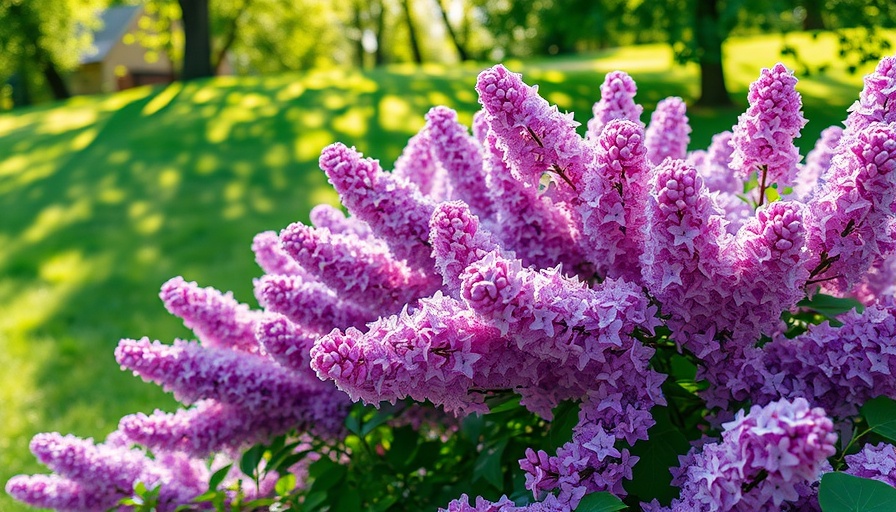
Unveiling the Beauty of Dwarf Lilacs
Dwarf lilacs (Syringa) have enchanted gardeners for generations, captivating hearts with their glorious blooms and enchanting fragrances. With recent advancements from breeders, we now have even more exquisite varieties to choose from. Ranging from three to eight feet tall, these compact shrubs and flowering trees pack a punch of color and aroma into any landscape, making them perfect for small gardens or backyards.
These Varieties Will Transform Your Landscape
Featuring an array of colors from magenta to pure white, the stunning flower panicles of dwarf lilacs continue to dazzle enthusiasts. But bloom size isn’t the only impressive quality; their fragrances can range from sweetly moderate to intensely aromatic, drawing in not just humans but pollinators alike.
Among the 15 remarkable dwarf lilac varieties, the Bloomables Series and Bloomerang Series stand out, not only for their striking flowers but also for their prolonged blooming seasons—ideal for gardeners looking to keep their landscapes vibrant throughout spring and into summer. Others like Miss Kim shine for their resilience and adaptability, making them suitable even for warmer regions as they show improved heat tolerance.
Low-Maintenance and High Impact
One of the best attributes of dwarf lilacs is their low-maintenance requirements. These hardy plants resist common issues like powdery mildew, allowing your plants to stay healthy and vibrant with minimal intervention. Deadheading, or removing spent flowers, is the only necessary task to keep these beauties thriving, making them perfect for novice gardeners.
For those with tighter gardening schedules, the longevity and durability of dwarf lilacs can provide peace of mind; once established, these plants ordinarily do not require regular pruning or excessive care, making them a reliable choice for every landscape.
Understanding the Types: Shrub vs. Tree Form
Dwarf lilacs come in both shrub and tree forms, allowing for versatility in your garden design. Tree form lilacs are grafted onto a standard trunk, giving them an elegant look with a dense canopy perched on a single stem. Conversely, shrub types branch out from the ground, creating a fuller appearance. Understanding these differences can help you decide which type fits best in your garden layout. For example, if you're aiming for a whimsical cottage garden, a shrub form might be more suitable, while a tree form could serve as a striking centerpiece.
Environmental Benefits of Dwarf Lilacs
Planting dwarf lilacs not only beautifies your landscape, but they also contribute to your backyard's ecosystem. These flowering shrubs are known for attracting pollinators such as bees and butterflies, which play a crucial role in maintaining healthy plant communities. As gardeners become increasingly aware of biodiversity, incorporating plants like dwarf lilacs into their gardens helps promote ecological resilience.
Tips for Successful Cultivation
To successfully grow dwarf lilacs, consider the following gardening tips:
- Soil Quality: Ensure well-draining soil that is rich in organic matter; this supports healthy growth.
- Sunlight: Dwarf lilacs thrive best in full to partial sun, so plant them where they can soak up plenty of light.
- Watering: While establishing, consistent watering is crucial, but once they’re rooted, they are drought-tolerant.
- Mulching: Using garden mulch can help retain moisture, reduce weeds, and add nutrients back to the soil.
Start Your Dwarf Lilac Journey Today!
Encourage fellow gardening enthusiasts to explore the colorful world of dwarf lilacs. With such a diverse selection to choose from, transforming your garden landscape can begin today! Whether opting for a compact shrub or a tree variety, these lilacs promise to enhance your gardening experience.
If you're ready to add beauty, fragrance, and pollinator support to your yard, dive into the dwarf lilac varieties mentioned above and discover which fits your garden design. Happy planting!
 Add Row
Add Row  Add
Add 




Write A Comment